News
Blockchain Rises: 7 Cryptocurrencies Riding the Wave of Trade Fear
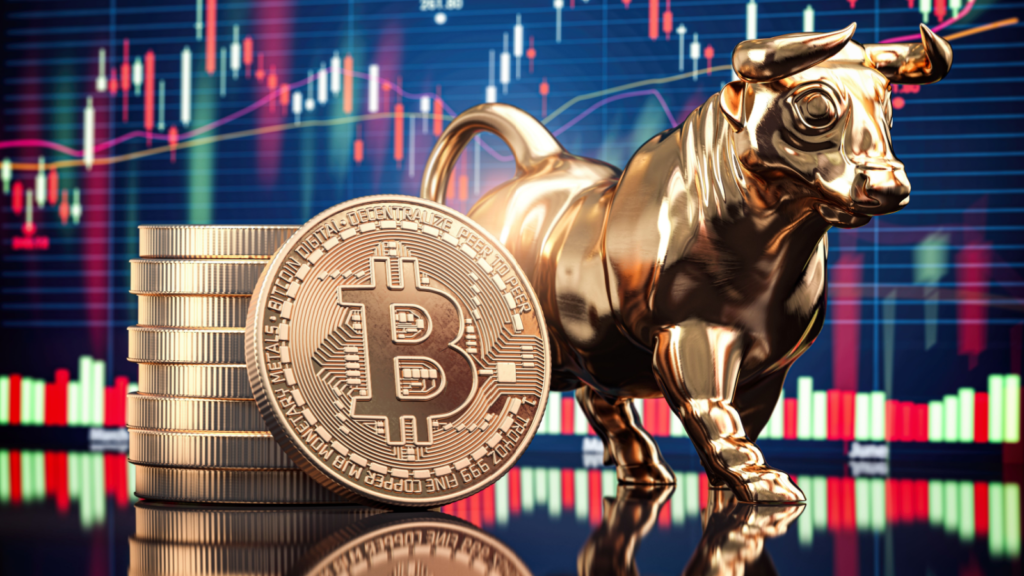
Recently, a Forbes article stated that the Federal Reserve is quietly admitting this gold is replacing the dollar, which could have strong implications for cryptocurrencies. While precious metal may be as far from blockchain reward tokens as you can get, the two share strong similarities.
Underscoring the bullish catalyst for both asset classes is fear trading. Of course, the so-called gold bugs can have a rather apocalyptic vision. However, at the heart of the discussion for both asset categories is the concept that the dollar may not have sustainable value. Therefore, it is imperative to diversify away from greenbacks to protect your wealth.
Traditionally, investors took this protective stance with gold investments. However, for modern market participants, virtual currencies represent a more convenient and easily accessible tool. However, with gold and digital assets rising on the same fear of a dollar devaluation, their long-term narratives could be positive. On that note, below are seven cryptocurrencies to watch this week.
Bitcoin (BTC)

Source: Shutterstock
Priced at $69,150 early Tuesday morning, Bitcoin (BTC-USD) has managed to increase by just over 1% in the last 24 hours. Over the past seven days, BTC has gained around 2%. Currently, the market capitalization of the original blockchain asset stands at $1.36 trillion. In contrast, all cryptocurrencies combined have a market value of $2.56 trillion, with Bitcoin dominance at around 53%.
On the bright side, BTC managed to respond well to the bearish attack that took the digital asset below $60,000 in early May. Furthermore, the resulting rally sees the coin rise above both its 20-day EMA and its 50-day EMA. Bitcoin’s 200-day daily moving average (DMA) stands at $54,768, implying that the long-term uptrend is intact.
On the not-so-pleasant spectrum, acquisition volume has been declining since late February this year. Typically, investors will want to see increasing volume levels confirm the sustainability of a price rally. Since we haven’t printed this dynamic yet, conservative investors are probably waiting on the sidelines.
However, BTC’s recent rebound from its 20-day exponential moving average (EMA) suggests near-term optimism. This is one to watch closely.
Ethereum (ETH)

Source: Filippo Ronca Cavalcanti/Shutterstock.com
Priced at $3,770 around midnight Tuesday, Ethereum (ETH-USD) has not been as lucky as Bitcoin and other cryptocurrencies, losing about 1% in the last 24 hours. During the last one-week period, ETH experienced a 2% decline in market value. Currently, the second-largest decentralized digital asset has a market capitalization of $453.3 billion. The coin accounts for approximately 18% of the virtual currency market share.
Ethereum is in a distinct if not unique position. As with other cryptocurrencies, ETH has experienced a sharp decline since the late February/early March cycle. However, in the subsequent rally, Ethereum managed to rise higher thanks to a very high acquisition volume. This is significant because it indicates that the rally is built on solid foundations.
However, the not so great part is that now that ETH has jumped above the $3,700 level, it has been somewhat directionless. Ideally, you would like to see the cryptocurrency jump above $3,800 in an attempt to reclaim $4,000. Unfortunately, the price action from May 21st onwards appears thoughtful.
With no big signals to work with, conservative investors may be waiting for a better read. This could manifest itself in the form of higher-than-expected inflation (i.e. devaluation).
Tether (USDT)

Source: Wit Olszewski / Shutterstock.com
As stablecoins, Bind (USDT-USD) is not the most monitored asset in terms of market performance. After all, since one of the cryptocurrencies is pegged to the dollar, the value should remain stable. However, since the market is a dynamic place, especially for virtual currencies, a perfect peg is never achieved indefinitely. Instead, USDT fluctuates and it is these fluctuations that can help guide investors.
Again, since the perfect peg is never achieved indefinitely, it necessarily means that at any point in time Tether is one of three things: dollar-aligned, worth more than the dollar, or worth less than the dollar. As a cryptocurrency supporter, you will naturally want the USDT to consistently be worth more than its peg. In this way, the dynamic indicates that people feel comfortable investing their wealth in a decentralized form.
However, when the dollar is worth more, this picture suggests the opposite. People are less comfortable with cryptocurrencies and would prefer the security of traditional assets: dividend stocksgovernment bonds, even just the parking of cash funds.
For much of this week, Tether has been trading below its peg level. It’s just something to recognize and look at.
Solana (SOL)
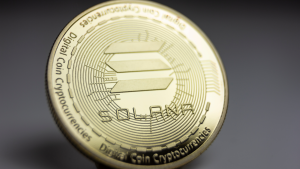
Source: Rcc_Btn / Shutterstock.com
Early Tuesday morning, Solana (SOL-USD) represented one of the top players among the main cryptocurrencies. In the last 24 hours it has gained 2.2%. However, performance over the past seven days has been less impressive, up only about 0.2%. However, SOL right now is trading at a respectable $167. This translates to a market capitalization of $76.7 billion. It represents approximately 3% of the cryptocurrency market share.
On the plus side, Solana’s bullish narrative mimics that of Bitcoin. From around mid-March to the end of April SOL underwent a strong downward trend. However, on May 1, SOL soared from an intraday low of $118.58. At the short-term peak, the cryptocurrency managed to briefly break above the $188 level.
However, on the not so encouraging aspect, a familiar air of skepticism emerges. Since the mid-March session, the volume of acquisitions has significantly decreased. During the rally that began on May 1, volume levels did not really perk up.
Volume levels aren’t everything, but traders like to see confirmatory evidence before making big moves. However, if the dollar’s devaluation turns out to be worse than expected, Solana will be able to fly. That’s why it might be helpful to keep an eye on gold.
XRP (XRP)
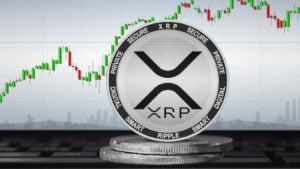
Source: Shutterstock
At the time of writing, XRP has reached 52 cents. This means that it has increased by 1% in the last 24 hours. However, over the past seven days, the cryptocurrency has fallen by about 1%. It’s been a disappointing and frustrating series of sessions for XRP holders. Currently, the digital asset has a market capitalization of $28.9 billion. XRP controls 1.12% of the broader blockchain ecosystem.
In terms of positive developments, it’s hard to find much encouragement here. Yes, incurring a double whammy of catastrophic declines on April 12th and 13th, XRP started to rise. During this time, some bullish speculators were buying the discount. There are believers here.
On the other hand, before the aforementioned crash, XRP was trading at around 61 cents. This is the base level that the bulls need to reach. However, as stated earlier, XRP is at 52 cents, down about 15% from its target.
Worse, while XRP was trying to gain momentum in late May, the bears moved in and took the wind out of the bulls’ sails. Currently, the asset is struggling to break above its 50 DMA. It is well below the 200 DMA, which stands at 57 cents. It’s a name to keep an eye on unless we see strong confirmation signs.
Dogecoin (DOGE)

Source: Orpheus FX / Shutterstock.com
Early Tuesday morning, Dogemoneta (DOGE-USD) was trading at just under 16 cents. It has recently been one of the most volatile cryptocurrencies. Over the past 24 hours, DOGE has slipped about 1%. However, over the past seven days, it has lost more than 3% of its market value. Right now, Dogecoin has a market cap slightly less than $23 billion. It commands 0.89% of the blockchain ecosystem.
For speculators there is a mix of positive and negative signals that can influence the final decision. Optimistically speaking, Dogecoin responded well to the volatility that began in late March and early April. Specifically, after falling to an intraday low of 12 cents on May 1, DOGE eventually managed to reach where it is now.
However, from a pessimistic point of view, the volume of acquisitions has been clearly declining since the end of February this year. Furthermore, this is really pronounced erosion, which is not surprising. After all, DOGE is a meme coin and is subject to periods of emotion-driven trading. It can get old after a while.
Investors may be better served waiting for a strong signal. Therefore, they should look for clues in the gold market.
Cardan (ADA)
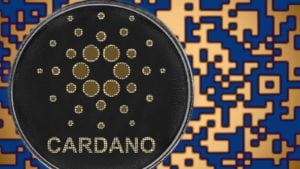
Source: Stanslavs / Shutterstock
At the price of 45.93 cents, Cardan (ADA-USD) appears to be one of the best performing assets among the major cryptocurrencies. Over the past 24 hours, ADA has gained 2.4%. During the final one-week period, it returned just over 1% of market value. Currently, the popular asset has a market capitalization of $16.4 billion. Compared to all other virtual currencies, Cardano holds 0.6% of the industry.
In terms of overall reception, ADA seems aligned with XRP. Both saw terrible drops in value in the April 12 and 13 sessions. After a line was drawn in the sand, the bulls attempted to push the price forward, with little success. Before the April crash, ADA was trading at around 59 cents. This is the baseline.
On the pessimistic view, Cardano’s 20-day EMA and 50-day DMA have consistently imposed upside resistance. This is angering bulls because cryptocurrencies generally do not move sideways indefinitely; it’s shooting for the moon or diving without a parachute.
As with other decentralized assets, Cardano is also suffering from declining volumes. Therefore, it is probably best to wait for a confirmation signal.
As of the date of publication, Josh Enomoto held a LONG position in BTC, ETH, USDT, and XRP. The opinions expressed in this article are those of the writer, subject to InvestorPlace.com Guidelines for publication.
A former senior business analyst for Sony Electronics, Josh Enomoto has helped broker major deals with Fortune Global 500 companies. In recent years he has provided unique and critical insights to the investment markets, as well as various other industries, including legal, construction and healthcare management. Tweet it to @EnomotoMedia.
News
Terra Can’t Catch a Break as Blockchain Gets $6 Million Exploited
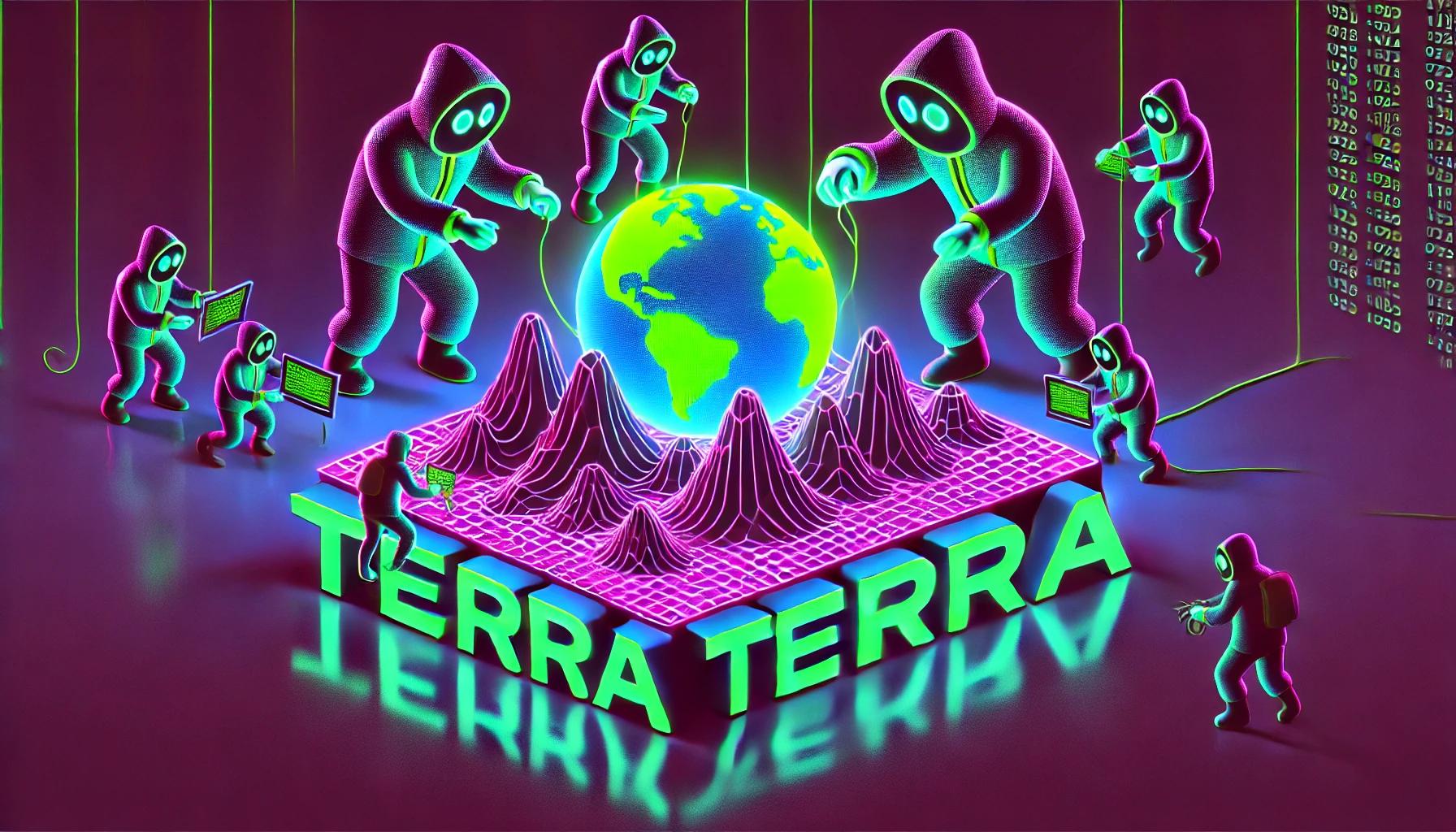
The attack, which exploited a vulnerability disclosed in April, drained around 60 million ASTRO tokens, sending the price plummeting.
The Terra blockchain has been exploited for over $6 million, forcing developers to take a momentary break the chain.
Beosin Cyber Security Company reported that the protocol lost 60 million ASTRO tokens, 3.5 million USDC, 500,000 USDT, and 2.7 BTC or $180,000.
Terra developers paused the chain on Wednesday morning to apply an emergency patch that would address the attack. Moments later, a 67% majority of validators upgraded their nodes and resumed block production.
The ASTRO token has plunged as much as 75%. It is now trading at $0.03, a 25% decline on the day. Traders who took advantage of the drop are now on 195%.
The vulnerability that took down the Cosmos-based blockchain was disclosed in April and involved the deployment of a malicious CosmWasm contract. It opened the door to attacks via what is called an “ibc-hooks callback timeout reentrancy vulnerability,” which is used to invoke contracts and enable cross-chain swaps.
Terra 2.0 also suffered a massive drop in total value locked (TVL) in April, shortly after the vulnerability was discovered. It plunged 80% to $6 million from $30 million in TVL and has since lost nearly half of that value, currently sitting at $3.9 million.
The current Earth chain emerged from the rubble as a hard fork after the original blockchain, now called Terra Classic, collapsed in 2022. Terra collapsed after its algorithmic stablecoin (UST) lost its peg, causing a run on deposits. More than $50 billion of UST’s market cap was wiped out in a matter of days.
Terraform Labs, the company behind the blockchain, has been slowly unravelling its legal woes since its mid-2022 crash. Founder Do Kwon awaits sentencing in Montenegro after he and his company were found liable for $40 billion in customer funds in early April.
On June 12, Terraform Labs settled with the SEC for $4.4 billion, for which the company will pay about $3.59 billion plus interest and a $420 million penalty. Meanwhile, Kwon will pay $204.3 million, including $110 million in restitution, interest and an $80 million penalty, a court filing showed.
News
Google and Coinbase Veterans Raise $5M to Build Icebreaker, Blockchain’s Answer to LinkedIn

Icebreaker: Think LinkedIn but on a Blockchain—announced Wednesday that it has secured $5 million in seed funding. CoinFund led the round, with participation from Accomplice, Anagram, and Legion Capital, among others.
The company, which is valued at $21 million, aims to become the world’s first open-source network for professional connections. Its co-founders, Dan Stone and Jack Dillé, come from Google AND Monetary base; Stone was a product manager at the cryptocurrency giant and also the co-creator of Google’s largest multi-identity measurement and marketing platform, while Dillé was a design manager for Google Working area.

The pair founded Icebreaker on the shared belief that the imprint of one’s digital identity (and reputation) should not be owned by a single entity, but rather publicly owned and accessible to all. Frustrated that platforms like LinkedIn To limit how we leverage our connections, Dillé told Fortune he hopes to remove paywalls and credits, which “force us to pay just to browse our network.” Using blockchain technology, Icebreaker lets users transfer their existing professional profile and network into a single, verified channel.
“Imagine clicking the login button and then seeing your entire network on LinkedIn, ChirpingFarcaster and email? Imagine how many introductions could be routed more effectively if you could see the full picture of how you’re connected to someone,” Stone told Fortune.
Users can instantly prove their credentials and provide verifiable endorsements for people in their network. The idea is to create an “open graph of reputation and identity,” according to the founders. They hope to challenge LinkedIn’s closed network that “secures data,” freeing users to search for candidates and opportunities wherever they are online. By building on-chain, the founders note, they will create a public ledger of shared context and trust.
Verified channels are now launched for
Chirping
Online Guide
Wallet
Discord
Telephone
TeleporterYou can find them in Account -> Linked Accounts Italian: https://t.co/mRDyuWW8O2
— Icebreaker (@icebreaker_xyz) April 3, 2024
“Digital networking is increasingly saturated with noise and AI-driven fake personas,” the founders said in a statement. For example: Dillé’s LinkedIn headline reads “CEO of Google,” a small piece of digital performance art to draw attention to unverifiable information on Web2 social networks that can leave both candidates and recruiters vulnerable to false claims.
“Icebreaker was created to enable professionals to seamlessly tap into their existing profiles and networks to surface exceptional people and opportunities, using recent advances in cryptographically verifiable identity,” the company said, adding that the new funding will go towards expanding its team and developing products.
“One of the next significant use cases for cryptocurrency is the development of fundamental social graphs for applications to leverage… We are proud to support Dan, Jack and their team in their mission to bring true professional identity ownership to everyone online,” said CoinFund CIO Alex Felix in a statement.
Learn more about all things cryptocurrency with short, easy-to-read flashcards. Click here to Fortune’s Crash Course in Cryptocurrency.
Fuente
News
Luxembourg proposes updates to blockchain laws | Insights and resources
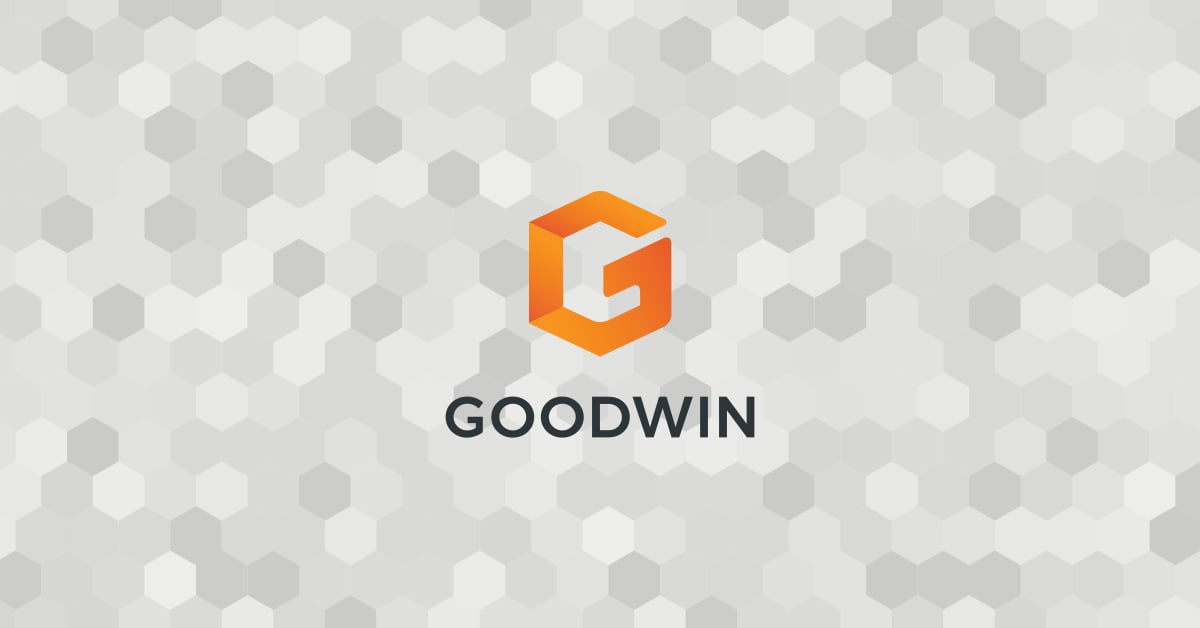
On July 24, 2024, the Ministry of Finance proposed Blockchain Bill IVwhich will provide greater flexibility and legal certainty for issuers using Distributed Ledger Technology (DLT). The bill will update three of Luxembourg’s financial laws, the Law of 6 April 2013 on dematerialised securitiesTHE Law of 5 April 1993 on the financial sector and the Law of 23 December 1998 establishing a financial sector supervisory commissionThis bill includes the additional option of a supervisory agent role and the inclusion of equity securities in dematerialized form.
DLT and Luxembourg
DLT is increasingly used in the financial and fund management sector in Luxembourg, offering numerous benefits and transforming various aspects of the industry.
Here are some examples:
- Digital Bonds: Luxembourg has seen multiple digital bond issuances via DLT. For example, the European Investment Bank has issued bonds that are registered, transferred and stored via DLT processes. These bonds are governed by Luxembourg law and registered on proprietary DLT platforms.
- Fund Administration: DLT can streamline fund administration processes, offering new opportunities and efficiencies for intermediaries, and can do the following:
- Automate capital calls and distributions using smart contracts,
- Simplify audits and ensure reporting accuracy through transparent and immutable transaction records.
- Warranty Management: Luxembourg-based DLT platforms allow clients to swap ownership of baskets of securities between different collateral pools at precise times.
- Tokenization: DLT is used to tokenize various assets, including real estate and luxury goods, by representing them in a tokenized and fractionalized format on the blockchain. This process can improve the liquidity and accessibility of traditionally illiquid assets.
- Tokenization of investment funds: DLT is being explored for the tokenization of investment funds, which can streamline the supply chain, reduce costs, and enable faster transactions. DLT can automate various elements of the supply chain, reducing the need for reconciliations between entities such as custodians, administrators, and investment managers.
- Issuance, settlement and payment platforms:Market participants are developing trusted networks using DLT technology to serve as a single source of shared truth among participants in financial instrument investment ecosystems.
- Legal framework: Luxembourg has adapted its legal framework to accommodate DLT, recognising the validity and enforceability of DLT-based financial instruments. This includes the following:
- Allow the use of DLT for the issuance of dematerialized securities,
- Recognize DLT for the circulation of securities,
- Enabling financial collateral arrangements on DLT financial instruments.
- Regulatory compliance: DLT can improve transparency in fund share ownership and regulatory compliance, providing fund managers with new opportunities for liquidity management and operational efficiency.
- Financial inclusion: By leveraging DLT, Luxembourg aims to promote greater financial inclusion and participation, potentially creating a more diverse and resilient financial system.
- Governance and ethics:The implementation of DLT can promote higher standards of governance and ethics, contributing to a more sustainable and responsible financial sector.
Luxembourg’s approach to DLT in finance and fund management is characterised by a principle of technology neutrality, recognising that innovative processes and technologies can contribute to improving financial services. This is exemplified by its commitment to creating a compatible legal and regulatory framework.
Short story
Luxembourg has already enacted three major blockchain-related laws, often referred to as Blockchain I, II and III.
Blockchain Law I (2019): This law, passed on March 1, 2019, was one of the first in the EU to recognize blockchain as equivalent to traditional transactions. It allowed the use of DLT for account registration, transfer, and materialization of securities.
Blockchain Law II (2021): Enacted on 22 January 2021, this law strengthened the Luxembourg legal framework on dematerialised securities. It recognised the possibility of using secure electronic registration mechanisms to issue such securities and expanded access for all credit institutions and investment firms.
Blockchain Act III (2023): Also known as Bill 8055, this is the most recent law in the blockchain field and was passed on March 14, 2023. This law has integrated the Luxembourg DLT framework in the following way:
- Update of the Act of 5 August 2005 on provisions relating to financial collateral to enable the use of electronic DLT as collateral on financial instruments registered in securities accounts,
- Implementation of EU Regulation 2022/858 on a pilot scheme for DLT-based market infrastructures (DLT Pilot Regulation),
- Redefining the notion of financial instruments in Law of 5 April 1993 on the financial sector and the Law of 30 May 2018 on financial instruments markets to align with the corresponding European regulations, including MiFID.
The Blockchain III Act strengthened the collateral rules for digital assets and aimed to increase legal certainty by allowing securities accounts on DLT to be pledged, while maintaining the efficient system of the 2005 Act on Financial Collateral Arrangements.
With the Blockchain IV bill, Luxembourg will build on the foundations laid by previous Blockchain laws and aims to consolidate Luxembourg’s position as a leading hub for financial innovation in Europe.
Blockchain Bill IV
The key provisions of the Blockchain IV bill include the following:
- Expanded scope: The bill expands the Luxembourg DLT legal framework to include equity securities in addition to debt securities. This expansion will allow the fund industry and transfer agents to use DLT to manage registers of shares and units, as well as to process fund shares.
- New role of the control agent: The bill introduces the role of a control agent as an alternative to the central account custodian for the issuance of dematerialised securities via DLT. This control agent can be an EU investment firm or a credit institution chosen by the issuer. This new role does not replace the current central account custodian, but, like all other roles, it must be notified to the Commission de Surveillance du Secteur Financier (CSSF), which is designated as the competent supervisory authority. The notification must be submitted two months after the control agent starts its activities.
- Responsibilities of the control agent: The control agent will manage the securities issuance account, verify the consistency between the securities issued and those registered on the DLT network, and supervise the chain of custody of the securities at the account holder and investor level.
- Simplified payment processesThe bill allows issuers to meet payment obligations under securities (such as interest, dividends or repayments) as soon as they have paid the relevant amounts to the paying agent, settlement agent or central account custodian.
- Simplified issuance and reconciliationThe bill simplifies the process of issuing, holding and reconciling dematerialized securities through DLT, eliminating the need for a central custodian to have a second level of custody and allowing securities to be credited directly to the accounts of investors or their delegates.
- Smart Contract Integration:The new processes can be executed using smart contracts with the assistance of the control agent, potentially increasing efficiency and reducing intermediation.
These changes are expected to bring several benefits to the Luxembourg financial sector, including:
- Fund Operations: Greater efficiency and reduced costs by leveraging DLT for the issuance and transfer of fund shares.
- Financial transactions: Greater transparency and security.
- Transparency of the regulatory environment: Increased attractiveness and competitiveness of the Luxembourg financial centre through greater legal clarity and flexibility for issuers and investors using DLT.
- Smart Contracts: Potential for automation of contractual terms, reduction of intermediaries and improvement of transaction traceability through smart contracts.
Blockchain Bill IV is part of Luxembourg’s ongoing strategy to develop a strong digital ecosystem as part of its economy and maintain its status as a leading hub for financial innovation. Luxembourg is positioning itself at the forefront of Europe’s growing digital financial landscape by constantly updating its regulatory framework.
Local regulations, such as Luxembourg law, complement European regulations by providing a more specific legal framework, adapted to local specificities. These local laws, together with European initiatives, aim to improve both the use and the security of projects involving new technologies. They help establish clear standards and promote consumer trust, while promoting innovation and ensuring better protection against potential risks associated with these emerging technologies. Check out our latest posts on these topics and, for more information on this law, blockchain technology and the tokenization mechanism, do not hesitate to contact us.
We are available to discuss any project related to digital finance, cryptocurrencies and disruptive technologies.
This informational piece, which may be considered advertising under the ethics rules of some jurisdictions, is provided with the understanding that it does not constitute the rendering of legal or other professional advice by Goodwin or its attorneys. Past results do not guarantee a similar outcome.
News
New bill pushes Department of Veterans Affairs to examine how blockchain can improve its work

The Department of Veterans Affairs would have to evaluate how blockchain technology could be used to improve benefits and services offered to veterans, according to a legislative proposal introduced Tuesday.
The bill, sponsored by Rep. Nancy Mace, R-S.C., would direct the VA to “conduct a comprehensive study of the feasibility, potential benefits, and risks associated with using distributed ledger technology in various programs and services.”
Distributed ledger technology, including blockchain, is used to protect and track information by storing data across multiple computers and keeping a record of its use.
According to the text of the legislation, which Mace’s office shared exclusively with Nextgov/FCW ahead of its publication, blockchain “could significantly improve benefits allocation, insurance program management, and recordkeeping within the Department of Veterans Affairs.”
“We need to bring the federal government into the 21st century,” Mace said in a statement. “This bill will open the door to research on improving outdated systems that fail our veterans because we owe it to them to use every tool at our disposal to improve their lives.”
Within one year of the law taking effect, the Department of Veterans Affairs will be required to submit a report to the House and Senate Veterans Affairs committees detailing its findings, as well as the benefits and risks identified in using the technology.
The mandatory review is expected to include information on how the department’s use of blockchain could improve the way benefits decisions are administered, improve the management and security of veterans’ personal data, streamline the insurance claims process, and “increase transparency and accountability in service delivery.”
The Department of Veterans Affairs has been studying the potential benefits of using distributed ledger technology, with the department emission a request for information in November 2021 seeking input from contractors on how blockchain could be leveraged, in part, to streamline its supply chains and “secure data sharing between institutions.”
The VA’s National Institute of Artificial Intelligence has also valued the use of blockchain, with three of the use cases tested during the 2021 AI tech sprint focused on examining its capabilities.
Mace previously introduced a May bill that would direct Customs and Border Protection to create a public blockchain platform to store and share data collected at U.S. borders.
Lawmakers also proposed additional measures that would push the Department of Veterans Affairs to consider adopting other modernized technologies to improve veteran services.
Rep. David Valadao, R-Calif., introduced legislation in June that would have directed the department to report to lawmakers on how it plans to expand the use of “certain automation tools” to process veterans’ claims. The House of Representatives Subcommittee on Disability Assistance and Memorial Affairs gave a favorable hearing on the congressman’s bill during a Markup of July 23.
-

 Videos9 months ago
Videos9 months agoCrypto News: Bitcoin, ETH Price, CPI Print, PYTH, WIF & MORE!!
-

 Videos9 months ago
Videos9 months agoCrypto News: Bitcoin Price, ETF, ETH, WIF, HNT & MORE!!
-
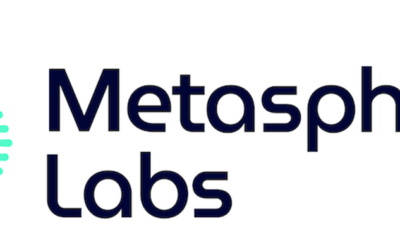
 DeFi9 months ago
DeFi9 months agoMetasphere Labs announces follow-up event regarding
-

 Videos9 months ago
Videos9 months agoSolana price potential?! Check out THIS update if you own SOL!!
-

 Videos8 months ago
Videos8 months agoWho Really CONTROLS THE MARKETS!! Her plans REVEALED!!
-

 DeFi6 months ago
DeFi6 months agoPump.Fun Overtakes Ethereum in Daily Revenue: A New Leader in DeFi
-

 DeFi6 months ago
DeFi6 months agoDegens Can Now Create Memecoins From Tweets
-

 News6 months ago
News6 months agoNew bill pushes Department of Veterans Affairs to examine how blockchain can improve its work
-

 News6 months ago
News6 months agoLawmakers, regulators to study impact of blockchain and cryptocurrency in Alabama • Alabama Reflector
-

 Bitcoin6 months ago
Bitcoin6 months ago1 Top Cryptocurrency That Could Surge Over 4,300%, According to This Wall Street Firm
-

 Ethereum8 months ago
Ethereum8 months agoComment deux frères auraient dérobé 25 millions de dollars lors d’un braquage d’Ethereum de 12 secondes • The Register
-

 Videos8 months ago
Videos8 months agoCryptocurrency News: BTC Rally, ETH, SOL, FTM, USDT Recover & MORE!

 ASTRO Price
ASTRO Price



